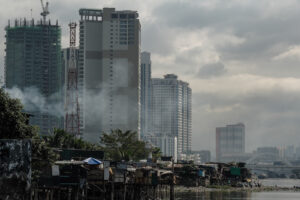For decades, understanding poverty meant simply counting incomes. But a profound shift began with the work of Nobel laureate Amartya Sen, who argued that true poverty wasn’t just about lacking money – it was about lacking opportunity, freedom, and the basic ability to live a fulfilling life.
This idea sparked a revolution in how we measure hardship. The United Nations Development Programme (UNDP) responded by creating the Multidimensional Poverty Index (MPI), a tool that goes far beyond dollars and cents. It examines health, education, and living standards, painting a far more complete and nuanced picture of who is truly left behind.
The latest Global MPI Report reveals a stark reality: 1.1 billion people – nearly one in five globally – experience multidimensional poverty. The crisis is most acute in Sub-Saharan Africa and South Asia, and tragically, more than half of those affected are children. But this year’s report carries a chilling new warning – climate change is dramatically exacerbating the problem.
The report, covering 109 countries and 6.3 billion people, demonstrates a terrifying link. Almost 80% of the world’s poor live in areas already battered by extreme heat, drought, flooding, or air pollution. Without significant changes, these regions could face an additional 37 days of extreme heat each year by mid-century, pushing millions further into desperation.
The Philippines is not immune. Nearly 4.5 million Filipinos are currently experiencing multidimensional poverty, with another 6 million vulnerable to falling into the same hardship. The primary struggles center around inadequate living standards, followed by limited access to education and healthcare. Air pollution in Manila and frequent flooding in the south are identified as critical threats to progress.
Recent events underscore this vulnerability with brutal clarity. Typhoon Tino recently unleashed torrential rains and destructive winds upon the Central Visayas region, including Cebu. Some areas were inundated with over 180 millimeters of rain in a single day, overwhelming communities and cutting off vital lifelines. Over 180 lives were lost, and hundreds more remain missing, displacing thousands from their homes.
Before relief efforts could even gain momentum, Typhoon Uwan loomed, threatening further devastation in Northern Luzon. These back-to-back disasters are a harrowing illustration of how natural hazards can trap vulnerable communities in a relentless cycle of loss and rebuilding, effectively erasing hard-won gains.
The MPI identifies this as a “double burden” – the intersection of poverty and climate change. Impoverished households are disproportionately located in hazard-prone areas and often live in structures unable to withstand extreme weather. They lack the financial safety nets, insurance, or access to assistance needed to recover from disaster.
The disparity is particularly pronounced in rural areas, where multidimensional poverty is more than four times higher than in urban centers. In the Philippines, where the majority of the population resides in rural communities, this means millions are simultaneously battling economic hardship and environmental risk.
Breaking this cycle demands a fundamental shift: integrating climate action directly into poverty reduction strategies. Existing programs, like the Pantawid Pamilyang Pilipino Program, provide a crucial foundation, but systems must become more adaptable and responsive to shocks. Scaling up emergency cash transfers and improving coordination between local governments during disasters are essential steps.
Modernizing data systems is also critical. Combining poverty mapping with detailed climate and hazard data can trigger automatic budget releases when disaster thresholds are reached, ensuring faster and more targeted support reaches those who need it most. This anticipatory financing can protect vulnerable families *before* disaster strikes.
The economic consequences of inaction are staggering. The Philippines already loses an estimated 1.2% of its GDP annually to typhoons, a figure projected to soar to 7.6% by 2030 and 13.6% by 2040 without significant adaptation measures. Climate-related shocks push nearly one million Filipinos into poverty each year.
Investing in climate-resilient infrastructure, renewable energy, and adaptive social protection isn’t just about mitigating risk – it’s about creating jobs, strengthening communities, and offsetting up to two-thirds of these projected losses. It’s an investment in a more secure and prosperous future.
As the world prepares for COP30, the 2025 Global MPI serves as a powerful reminder: poverty reduction and climate resilience are not separate goals, but inextricably linked. For the Philippines and its neighbors in ASEAN, prioritizing both is essential to building a future that is truly sustainable and inclusive for all.






